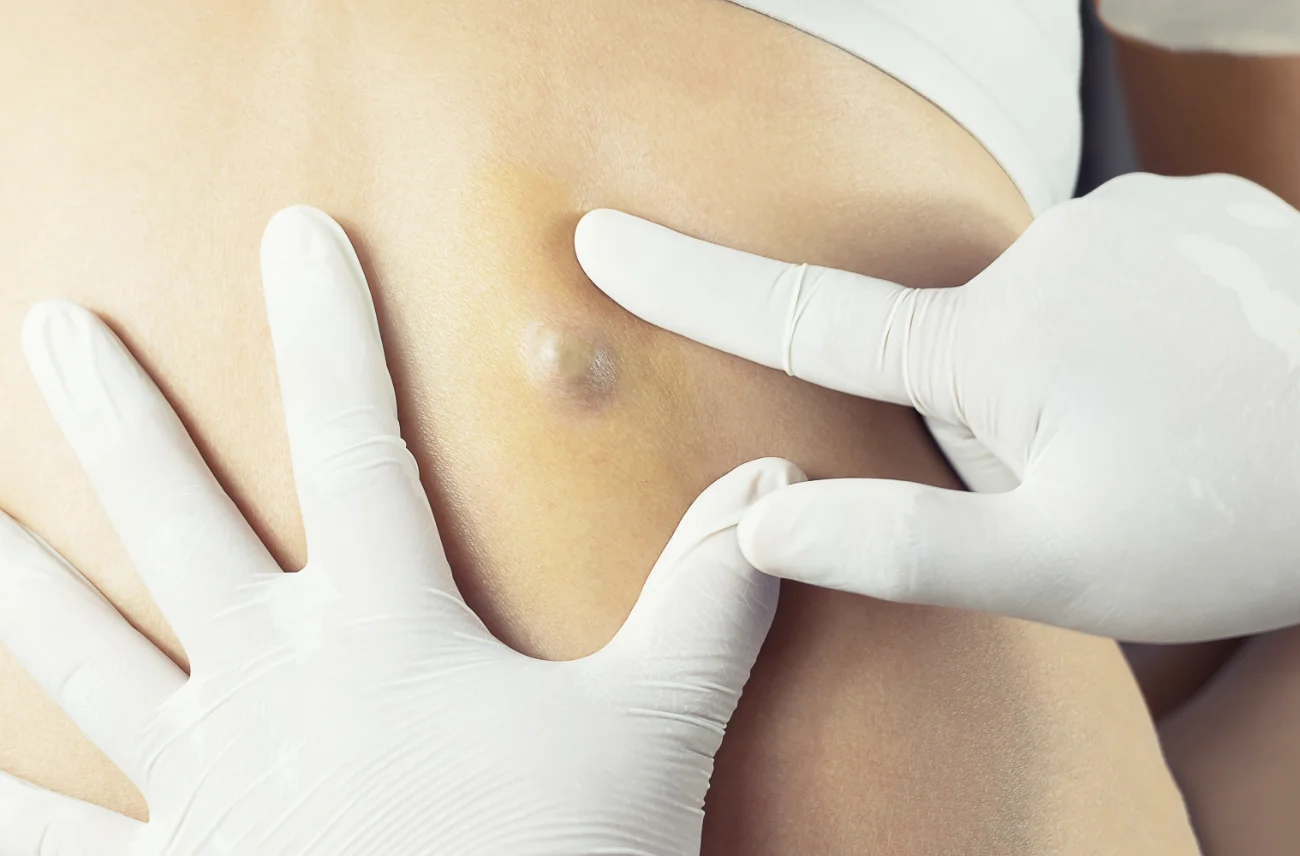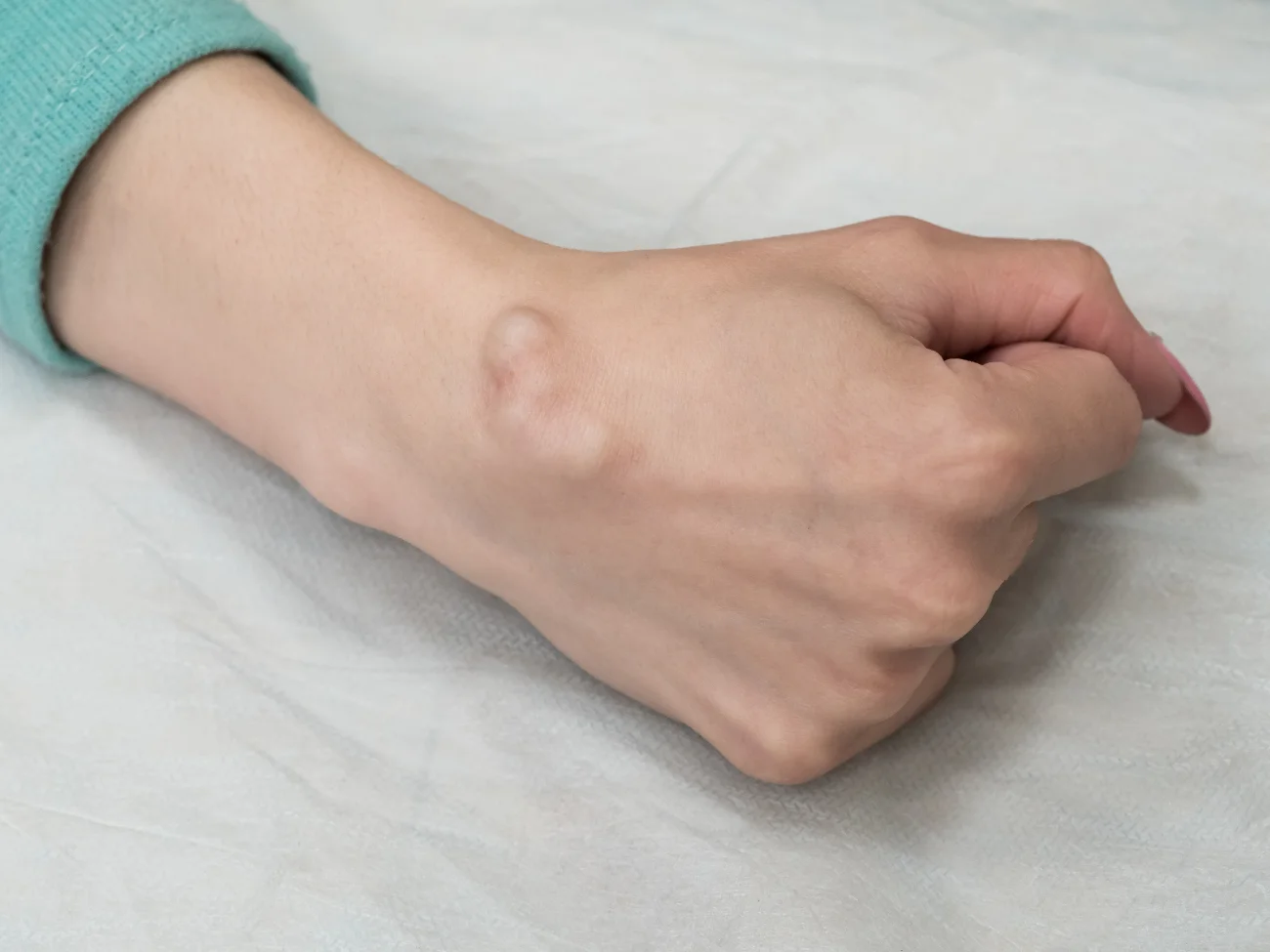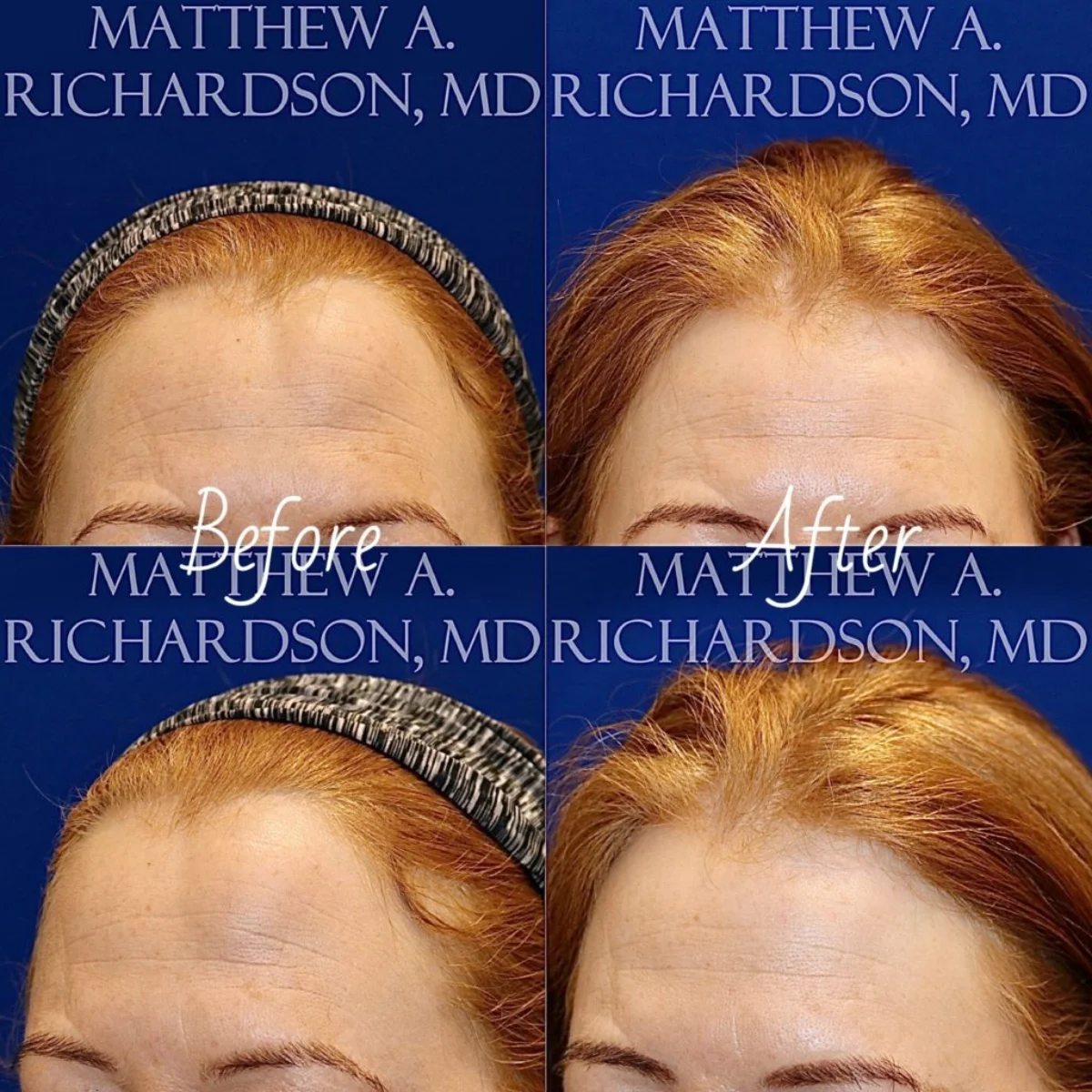Cyst And Lipoma Removal
Conveniently Located to Serve the Dallas, Fort Worth, Collin, and Denton Counties.



What is a lipoma?
A lipoma is a collection of adipose (fat) cells that can occur almost anywhere on the body. The human body has fat beneath the surface of the skin virtually over the entire body. A lipoma is a collection of these fat cells that then grow abnormally and form a mass or lump. These lipomas may become visible as they grow larger. Some patients will develop multiple lipomas throughout their body, and certain medical conditions or syndromes may cause patients to develop numerous lipomas. Any number of other masses or lesions could appear similar to a lipoma, including a lymph node, cyst, hemangioma, salivary gland tumor, and others.

Lumps and bumps on the head and neck are very common. Dr. Matthew Richardson and Dr. Jordan Cain specialize at removing cysts, lipomas, keloids, scars, moles, and skin lesions on the face, neck, ears, nose, and scalp. Cysts and lipomas are especially common on the face, neck, and scalp.
Where do lipomas come from?
Lipomas come from the adipose cells of the human body. We do not know why some patients form lipomas and others do not. Some diseases, syndromes, and families may be prone to forming multiple lipomas in various parts of the body.
What is a skin cyst?
A skin cyst is a lesion that is derived from skin cells and is often filled with fluid or debris. Many skin cysts, also known as epidermal inclusion cysts, sebaceous cysts, or epidermoid cysts, may enlarge over time. Skin cysts also typically have a punctum, which is an opening in the skin that forms a connection to the cyst cavity. These cysts may drain fluid via the punctum, and they can even become infected if left untreated. In these cases, cyst abscess formation is possible, which may require incision and drainage in addition to antibiotics. The definitive treatment for a skin cyst is surgical removal. “Popping” or draining a cyst at home is never recommended as this could cause an infection and will not cure the cyst. If the cyst is not completely surgically removed, it will recur.
A lipoma is different from a cyst in that a lipoma is a collection of adipose tissue (fat cells) that occurs under the skin. Although there is some controversy as to whether a lipoma can turn into a cancerous growth called a liposarcoma, lipomas by definition are benign, non-cancerous growths. There is usually not a connection from the lipoma to any opening in the skin, which is different from most skin cysts. The diagnosis of a lipoma can usually be made on physical exam, but may require an imaging study like an ultrasound, CT scan, or MRI scan. While liposuction or injections are an option to reduce the size of a lipoma, lipomas tend to recur if not completely removed surgically. A small incision can be made over the lipoma and used to excise the lipoma. In some cases, lipomas come out very easily during surgery, while others might be deeply adherent to the underlying tissues. Regardless, an enlarging lipoma should usually be surgically removed for both therapeutic and diagnostic purposes.
What happens during a lipoma removal?
A lipoma is removed surgically. While some practitioners may offer liposuction or fat dissolving injections to reduce a lipoma, we are against this approach for several reasons. If a lipoma is not fully removed surgically, it will continue to grow. Techniques such as liposuction or fat dissolving injections will leave at least some of the mass behind, which will inevitably continue to grow and eventually require surgical removal anyway.
When removing a lipoma surgically, an incision is usually made through the skin overlying the mass. The surgeon then dissects the normal tissue away from the lipoma mass, and then fully removes the mass. The normal layers are then put back together using sutures, including closing the skin with sutures. In some cases, large lipomas may stretch the skin or distort the surrounding soft tissue, and modifications such as excess skin removal might be needed during closure.
In some select cases, we may be able to perform lipoma removal endoscopically (using cameras and endoscopes through small incisions), but this is not as common as open surgery. Even endoscopic removal requires an incision large enough to remove the mass from the body, and may require multiple smaller incisions.
We perform MANY lipoma removals every year, but as facial plastic surgeons, we only remove lipomas on the face, scalp, neck, and shoulders as this is our area of expertise.
How do you remove a skin cyst?
Cyst removal is in many ways similar to removing a lipoma, but cyst removal requires removing some of the skin as well. The cyst is generally attached to the overlying skin, and removing the punctum, or drainage pathway for the cyst, will help to decrease the recurrence rate.
Is lipoma or cyst removal painful?
Small or medium-sized lipomas in the head and neck areas can usually be removed under local anesthesia. In these cases, the skin and surrounding tissue is numbed with lidocaine or other local anesthetics, and the patient is awake for the procedure. Larger lipomas (particularly large lipomas in the neck and shoulder areas) may require general anesthesia or IV sedation for patient comfort and safety. In either case, the procedure should be painless once the anesthesia is established.
After the procedure, there may be some soreness in the area, but there is generally not much discomfort. Any postoperative pain that occurs can be controlled with oral pain medications if needed.
Cyst removal can usually be performed under local anesthesia.
What can I expect after lipoma or cyst removal? What is the downtime and recovery after lipoma or cyst removal?
After lipoma or cyst removal, there may be some soreness in the area as described above. There will usually be sutures in place that may need to be removed around one week after surgery. We may opt to cover the incision with a tape dressing or instruct you to apply antibiotic ointment to the incision. We instruct patients to avoid getting their incision wet for at least 24 hours and try not to soak the incision while the sutures are in place. Patients are instructed to avoid exercise, heavy lifting, etc for at least two weeks after surgery. In some cases (usually for larger lipomas only), a drain may be required for a few days in order to limit or prevent any fluid collection beneath the skin after surgery.

“Could not have gone any better”
“I honestly could not have asked for a better experience! I had a golf ball sized lipoma removed from my right eye area. I had the lipoma for a while, over the last 3 years I noticed that it was growing in size. A couple of months ago my husband and I finally decided that we were going to get my lipoma removed. I went to google researching facilities that offered the procedure and found a review for Dr. Richardson at Texas Facial Aesthetics. In went to their site and they had photos of past lipoma procedures, and that gave me some comfort seeing the work that he has done. I went for my consultation and I was sold!! Every one there was just so friendly and upbeat. Even though everyone is wearing a mask you can hear the smiles in their voices. Beth was Dr. Richardson’s assistant and she is so lovely and kind. Dr. Richardson was very kind, informative, and reassuring! The two together are honestly a great team! When it came time for my procedure, they were so amazing. I was so afraid and they asked another one of the assistants to stand in and comfort me. Dr. Richardson checked on me throughout the procedure which I loved. The entire experience could not have gone any better than it did. I’m so happy that I chose to go here!”
(GOOGLE)
How do I know for sure I have a lipoma? Are there tests needed for a lipoma or a cyst?
The only way to know for certain that a mass is a lipoma or a cyst is to have it removed surgically and examined by the surgeon and pathologist. A cyst or lipoma can often be presumptively diagnosed by an exam performed by a doctor familiar with these types of lesions, but this type of diagnosis is not 100% certain. In some cases, preoperative imaging (such as an MRI or CT scan) may be needed to confirm the diagnosis, rule out other diseases such as cancer, or ensure that the mass is located in an area that will allow for safe surgical removal away from vital structures.
Is lipoma removal safe? What are the risks of lipoma or cyst removal?
Yes, in general, lipoma or cyst removal is very safe. Like all procedures (surgical and non-surgical), there are some risks involved. Any time the skin is cut, there will be a scar, but we try to make the scars as invisible as possible. Poor wound healing or a noticeable scar is a risk of any surgery, including lipoma or cyst removal. Other risks include bleeding, bruising, swelling, pain, infection, nerve injury, recurrence of the lesion, fluid collection, and undesirable cosmetic changes.
Does a lipoma or cyst need to be removed? Do I have to treat a lipoma? When should a cyst be removed?
While they are almost always benign (non-cancerous), rare forms of lipomas can be malignant (cancerous). In some cases, a lipoma could become painful, limit movement, or be disfiguring. When they occur on the face, lipomas might cause functional issues such as obstruction of vision, limitation of facial movements, or other problems. The common reasons to treat a lipoma are that they might be causing discomfort or that they are simple visible and unattractive.
One of the most important reasons to remove a cyst or lipoma is for diagnostic purposes. When we remove the mass from a patient, we send the lipoma or cyst to a pathologist who examines the mass and looks at the tissue under the microscope. This allows the patient to be sure that there are no cancerous cells or anything else unusual about the mass.
A lipoma or cyst should be removed when it is small. This keeps them from becoming large, disfiguring, or causing functional problems. This also allows for a definitive diagnosis, because we never know with 100% certainty that a mass is a cyst or lipoma until we remove it.
Is lipoma removal permanent? Can lipomas or cysts come back?
In most cases, lipoma or cyst removal is permanent. There is always a risk of lipoma or cyst recurrence, but with surgical excision, this risk is very low.
Will I look different after lipoma or cyst removal?
After lipoma or cyst removal, patients should notice that the mass or lump where the lesion was located is no longer present. If the mass was large or present for a long period of time, it’s possible that the lump will have created a pocket or a depression in the bone that may be difficult to fully correct or resolve, but in general, the cosmetic results should be better than before lipoma or cyst removal.
Who is qualified to perform lipoma or cyst removal?
Lipoma or cyst removal is commonly performed by several different types of medical specialists. Facial plastic surgeons, plastic surgeons, otolaryngologists, general surgeons, and dermatologists most commonly perform lipoma and/or cyst removal. As facial plastic surgeons, we are uniquely trained in the intricacies of surgery and anatomy in the head and neck area. We also perform many lipoma removals in the head and neck area every year, and have special training and skills that allow us to help any scars heal as well as possible.
When a skin cyst or lipoma is located on the face, neck, or scalp, surgical excision can lead to an unsightly scar if not performed well. Fortunately, Dr. Richardson and Dr. Cain are highly-qualified Facial Plastic Surgeons who specialize in facial aesthetic procedures and can remove face and neck cysts or lipomas with the smallest and most cosmetically-pleasing scar possible.
How much does lipoma removal cost? How much does it cost to remove a skin cyst?
Lipoma or cyst removal costs can vary widely depending on many different factors. Pricing may start between $1500-3500 for a small lipoma or cyst that can be removed under local anesthesia, but larger masses might include anesthesia and hospital fees that can raise the price considerably. We are happy to provide a cost estimate at the time of your consultation. Keep in mind there may also be additional fees involved for overall medical care if additional tests (like CT scans, pathology reports, or blood work) are involved.
CLICK HERE TO SEE BEFORE AND AFTER PHOTOGRAPHS OF SOME OF OUR LIPOMA REMOVAL PATIENTS
How can I set up a Cyst and Lipoma Removal Consultation?
Call or text Texas Facial Aesthetics at 469-362-6975 to set up a consultation with either Dr. Matthew Richardson or Dr. Jordan Cain. You can also email us at info@txfaces.com for more information.
